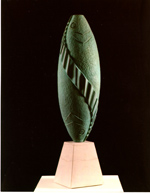Dahrl came over from her home in Provo, Utah to attend her first Camp Brotherhood symposium in 2001. She made many new friends and, through her work and slide show, impressed everyone with artistic talent. Now we all have a chance to learn more about her as a person and artist. 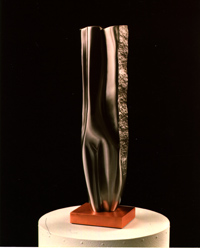
LE: By way of introduction, tell us a little about why you became an artist and what influenced your direction in art.
DT: It’s my mother’s fault....She gave me the name, Dahrl, which “forced” me to be unique, and hence, an artist. Trouble is, being “unique” often causes problems. My high school graduation diploma was held in a pile with the “rest” of the boys’, causing great panic and fear on my part-thinking that I hadn’t really graduated….The Army tried to draft me during the Vietnam Era....And this last summer at Camp Brotherhood, I had been assigned to room with two “fellows,” as in “men” carvers. However, my husband appreciated the fact that Arliss quickly remedied that situation!
When my brother and I were kids, Mom was his Cub Scout leader. But she didn’t discriminate, so I got to join in the fun. And it was fun! We were always making things: toilet-paper-roll cannons, moving carved soap tanks, wood scrap sailboats, etc. This led to my early appreciation for tools — and the objects those tools could help make. Since my Dad was a doctor, avid fisherman and hunter, my siblings and I would always get lessons in on-site exploration of the “inner-workings” of fish, rabbits, deer hearts, or whatever. Curiosity about and a great love for nature was the result. 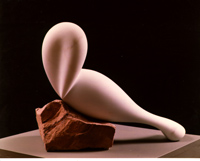
My fourth-grade teacher had a hand in my art career as well-noticing my drawing ability, encouraging me to continue, and even telling me that I had “talent.”(She probably told every kid in my class that!) Oh well, at least I felt like she really meant it. Over the years, I have taken many different art classes and learned many skills: painting, pottery, stained glass, loom-weaving, etc.
At age 40, after raising our three children to semi-self-sufficient ages (do they ever become truly self-sufficient?!), I returned to college at Brigham Young University to get a degree in Art. Four years later, after having completed their Design/Illustration program, and about ready to graduate, I finally took a sculpture class. I was completely CONSUMED!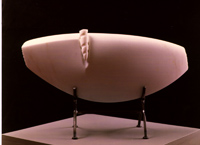
If only I had listened to my husband, who, years earlier, had suggested that I do sculpture, to which I had replied that I would NEVER do that! I literally couldn’t get enough of it — still can’t, so I stayed an extra year and took as many sculpture classes as I could. My then professor and mentor (internationally renowned sculptor Neil Hadlock), has since become a business partner, doing all my metal casting and finishing in bronze and stainless steel. His continuing instruction and direction have helped me immensely.
LE: How does your art reflect your philosophy?
DT: My philosophy, which stems in part from that of my mentor, is that, “Abstraction can be more powerful than realism.” The other “part” that helps determine that philosophy is that I am generally bored silly looking at realism. Example: If I am looking at a realistic carving of a horse, I say to myself, “Ho-hum, another horse.” However, if that carving of a horse is somewhat ambiguous, it demands my involvement in interpreting what that carving is about. I find that so much more stimulating!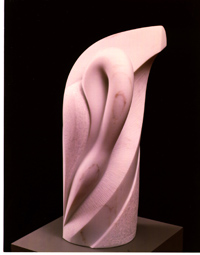
LE: What obstacles and challenges have you overcome?
DT: When I graduated BYU in 1996, I still had not tried stone carving, although I had wanted to. Finally, almost two years later, a friend in Colorado showed me how to push a hand-rasp on soapstone. I came home and basically taught myself to carve soft stone. The following year, through a grant I had received from the Utah Arts Council, I attended the MARBLE/Marble symposium in Colorado, where I had my first experience with the “hard stuff.” I had a lot to learn in a hurry, as I had received a commission to carve a very large marble swan. Little did I realize how big 8 1/2 cubic feet of marble would really be! That 1500 lb. block was very intimidating at first, but I was able to reduce it to about 900 lbs. for the trip home in my Isuzu Trooper. Ever since then, my philosophy has been to continually get “stoned” by carving. Luckily my family is very supportive of my “habit.”
LE: Who or what has influenced your art form? Have you been influenced by any particular artist? What is the source of inspiration of your forms?
DT: The timeless beauty of Egyptian, African, and Native American Art, has greatly influenced the forms I carve, as has the work of Brancusi, Isamu Noguchi, Jesus Bautista Moroles, Francisco Zuniga, Archipenko, and many others. Inspiration for sculpture comes from anything and everything-from a shadow, to a curve, to the shape of a rock itself. Nature has an endless supply of shapes and patterns and juxtapositions to inspire me. But I also feel that the artist must “interpret” through his/her own eyes and experience to make his/her art meaningful! To me, there is no joy or ultimate satisfaction in copying what has already been created, whether by God or anyone else. I believe that real creativity lies in creating new ways of expressing something. Abstracted female forms and birds seem to dominate my work, partly because their curves can be so sensual. After all, isn’t that what each of us, as artists want to convey? Something so sensual that others can’t keep their hands and eyes off of it?!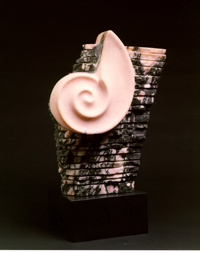
LE: Do you work full-time or part-time?
DT: Every week I try to carve full-time, but am rarely successful in the delivery. Laundry, errands, grocery shopping, cooking, and attending to the business side of art often crowd out the “fun-stuff” of carving. Sometimes it’s even hard for me to leave town or go on vacation, because for me, carving stone is vacation enough! Generally, when I am able to carve, I’ll have two to four pieces in progress, so I can change off doing different processes-such as angle-grinding, hand-rasping, air hammer, hand-sanding, etc. As for stone, I’ve rarely met one I didn’t like! It was really fun to be exposed to the amazing color combinations in the stone available from the vendors at Camp Brotherhood this last summer. Is there anything in the world more spectacular than Aphrodite, Pink Leopard, or Antique Verde marble? Then again, Indiana Limestone and white Colorado Yule Marble are great for allowing forms to declare themselves more clearly.
LE: How much do you complete in a year? Where do you exhibit your work?
DT: I have been averaging completion of 25 to 30 pieces per year, including cast work (the number getting smaller as the pieces get larger), depending also on the number of shows/exhibits I’m in per year. This year will have seen at least nine, including two Olympics exhibits. I am currently in two galleries, “‘A’ Gallery,” SLC, Utah, and “Royce & Bond,” in Boulder, Colorado. I’m also in the process of scouting for a couple more, and working on a large stone/metal/glass commission for an office building in Las Vegas.
LE: What have been your satisfactions in life as an artist?
DT: What have really made life rich have been the friendships forged through attending carving symposiums the last four summers. (I’m hooked!) It was a treat to meet Uchida, B. Amore, Verena Schwippert and everyone else at Camp Brotherhood this year. I just hope we will be able to continue our associations through the years ahead. I personally benefit so much from seeing others’ work and from their suggestions and input. Lastly, I wouldn’t have even made it to the NWSSA Symposium, if my good friends from Arizona, Colorado, and Kansas (whom I caravanned with), hadn’t “saved” me when my truck transmission blew! 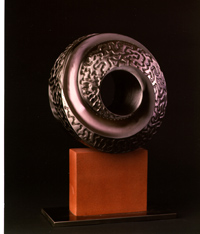
Life is too busy, but life is good. And I am so lucky to spend any time doing what I feel I was born to do-SCULPT! (Any day that I can’t carve stone is a day wasted!)
LE: Any final thoughts you want to express?
DT: Just a few final thoughts from my artist statement:
“Stone has a life of its own-besides the one unearthed by the sculptor! How many parts of untold life forms inhabit its dimensions? How many rivers’ or ravines’ corridors through countless centuries did it travel to find itself in my possession-or yours? There is contained in every stone-mystery and infinity!
I believe that great sculpture is empowered with the capacity to ‘communicate’ with us on some deep level that words fail to describe. It has its own numen or spirit. This ‘communication’ at an almost subconscious level is part of my fascination with sculpture. In fact, all aspects of the sculpture process from the medium to the end result, are to me fulfilling and revealing. Most of all, I cannot imagine life without art-without the joy and pain of creating-and searching for solutions that seem never completely unveiled. Art is as basic to my life as breath-and sculpture is the means with which to truly breathe!”
Thanks for allowing me to express my views in your awesome newsletter!
